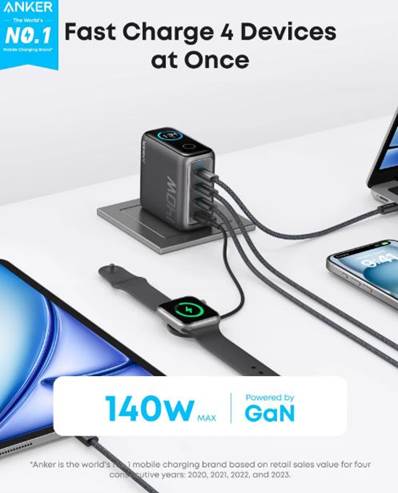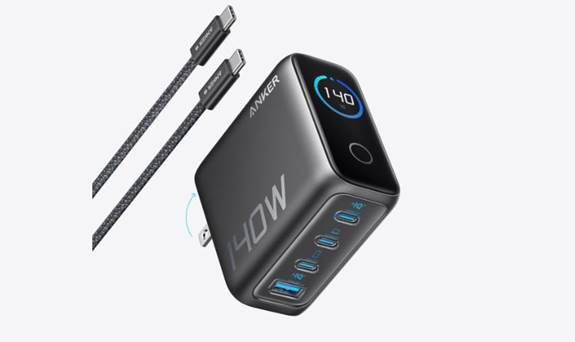That
lingering anxiety as your phone’s battery percentage drops below 20% is a
feeling we all know too well. Over time, you might notice your iPhone doesn’t
last as long as it used to, needing more frequent charges throughout the day.
This gradual decline is a natural result of battery aging, but how you use and
charge your device plays a huge role in how quickly it happens. A
well-maintained battery isn't just about avoiding the hunt for an outlet; it’s
about ensuring your phone remains a reliable tool for years to come, saving you
money and frustration. In this article, we will explore the science behind
battery degradation and provide practical, everyday strategies to significantly
slow it down.

How iPhone Batteries Degrade Over Time?
Chemical Aging and Charge Cycles
Your
iPhone's lithium-ion battery has a finite lifespan, with its capacity to hold a
charge diminishing over time due to chemical aging. Each full charge
cycle—using 100% of the battery's capacity—slightly degrades its internal
components, similar to a sponge losing its ability to absorb water. This
natural process means you'll need to recharge more frequently, even with the
same usage. Understanding this is crucial for effective long-term battery
management.
Impact of Heat and Usage Patterns
Excessive
heat is the primary enemy of your iPhone's battery health. High temperatures,
whether from leaving your phone in a hot car, intensive use while charging, or
prolonged gaming, accelerate chemical aging. The battery operates best at room
temperature, and exceeding this can cause significant stress. Additionally,
daily habits like consistently draining the battery to 0% or charging it to
100% put extra strain on the battery, leading to faster wear. Maintaining a
moderate charge level throughout the day can help prolong its lifespan.
Best Practices for Charging Your iPhone
Avoiding Extreme Heat and Cold
Being
mindful of your iPhone’s environment is one of the easiest and most effective
ways to protect its battery. You should always make a conscious effort to never
leave your device in a parked car on a hot day, as interior temperatures can
soar to dangerous levels very quickly. Similarly, avoid placing your phone
directly under a pillow or on a blanket while charging, as this traps heat and
prevents necessary cooling. During charging, especially with wireless chargers
that can generate additional warmth, it is wise to remove any protective case
that might act as an insulator if you notice the device becoming hot. Just as
damaging as heat, extremely cold temperatures can temporarily reduce battery
capacity and cause unexpected shutdowns, so always try to keep your phone as
close to room temperature as possible for optimal health.
Optimal Charging Ranges and Habits
The
most beneficial habit you can adopt is to keep your iPhone’s battery level
between 20% and 80% most of the time. Avoiding the extremes of a full drain or
a complete fill significantly reduces stress on the battery, slowing its
chemical aging. Using features like Optimized Battery Charging, which learns
your routine and waits to finish charging past 80% until you need to use it, is
an effortless way to implement this practice. Furthermore, the quality of your iphone charger
has a direct impact; using a poorly made, uncertified charger can cause uneven
power delivery and heat buildup that harms the battery. In fact, choosing to
use a charger from a major brand like Anker is actually very beneficial for
your phone's battery, as they are engineered to provide stable, clean power and
advanced safety features that prevent overheating.

Settings and Features to Preserve Battery Health
Optimizing Screen and Performance Settings
Your
iPhone’s screen is the biggest power drain, so adjusting its settings can
significantly save battery life. Reduce the auto-lock time to 30 seconds or one
minute to ensure the display turns off quickly when not in use. Enable
Auto-Brightness to adjust screen intensity based on your environment,
preventing unnecessary brightness indoors. For newer models with ProMotion
displays, using a standard 60Hz refresh rate instead of 120Hz can conserve
energy. Additionally, review and disable non-essential app notifications to
prevent the screen from lighting up frequently, which drains power over time.
Managing Background Activity and Notifications
Many
apps refresh content and use location services even when not in use, silently
draining your battery. To manage this, go to Settings > General >
Background App Refresh and disable it or limit it to essential apps. Review
location services in Settings > Privacy & Security > Location
Services, setting apps to “While Using” instead of “Always” where possible.
Adjust your email settings to fetch messages manually or at longer intervals
instead of instantly to save background energy. By managing these activities,
you can ensure your phone’s energy is focused on what you’re actually doing.
Conclusion
Extending
your iPhone’s battery lifespan involves consistent smart habits rather than a
single trick. The key principles are straightforward: avoid extreme heat,
refrain from fully draining the battery, and use built-in software features for
protection. By being mindful of your charging environment, keeping your charge
within a moderate range, and optimizing settings, you can significantly slow
the aging process. These strategies help transform battery maintenance from a
source of anxiety into a simple routine. Ultimately, a little awareness today
ensures your iPhone remains a reliable and long-lasting companion for years to
come.
